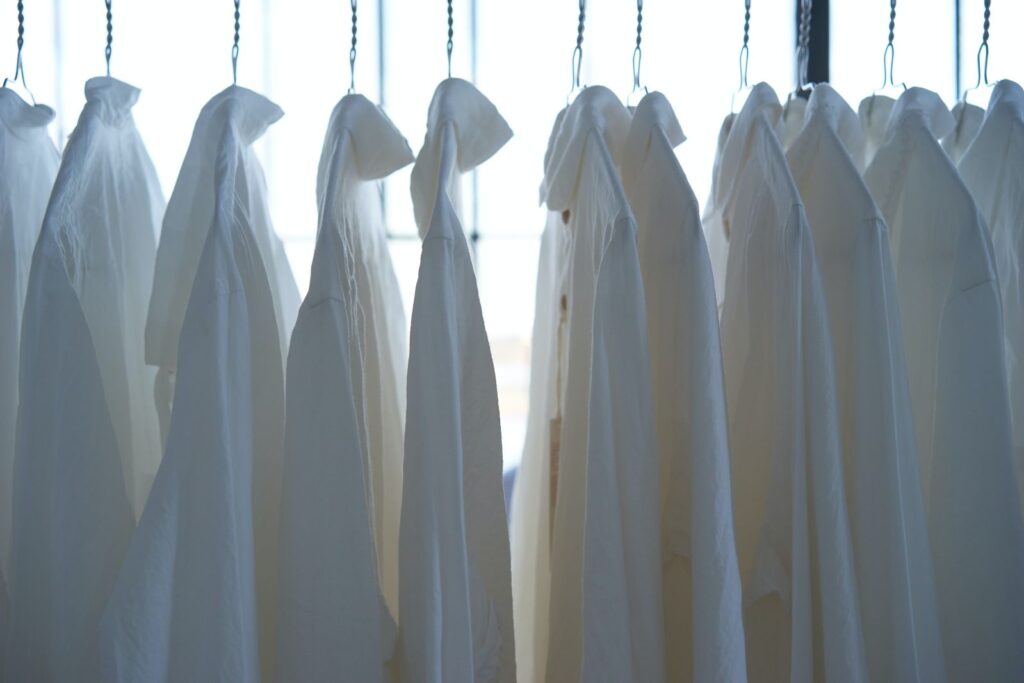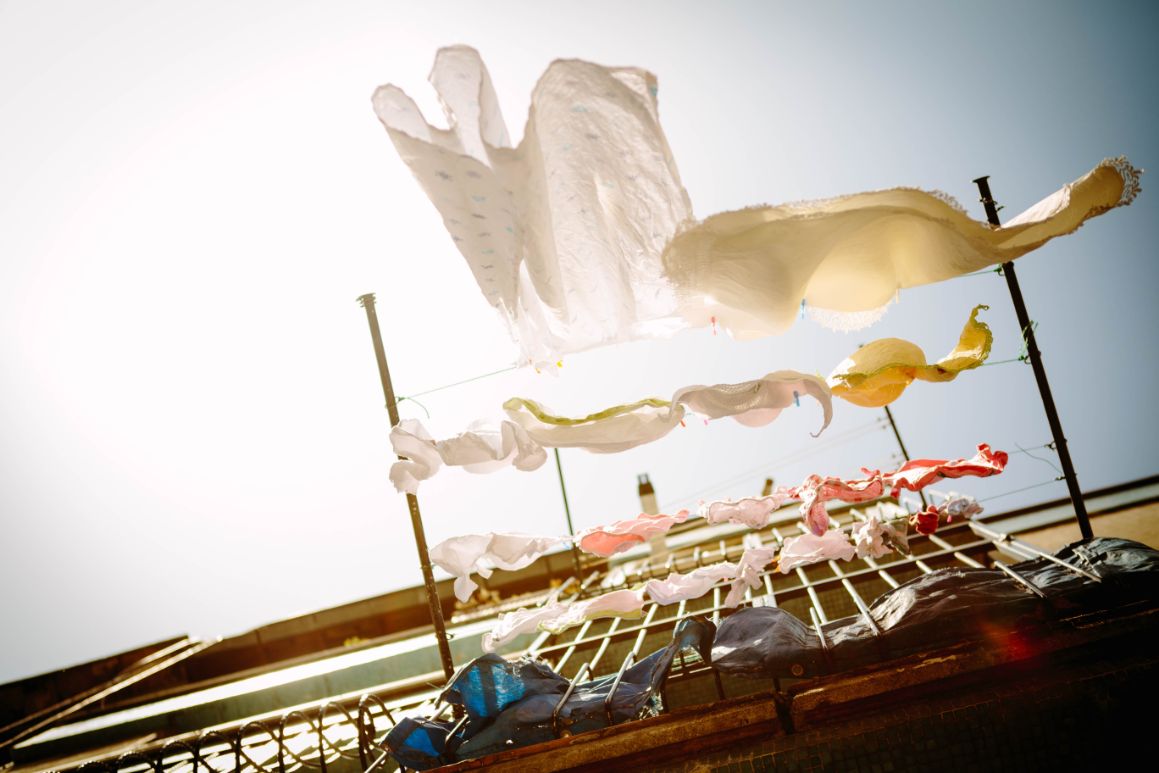There are numerous explanations for why white clothing is so striking. Wearing a crisp, white outfit impresses despite its lack of fashion or color coordination for no apparent reason. We all want to keep our whites looking white, but which method should you use to keep them that way? Do you wash whites in hot or cold water? If you want bright whites, hot water is a good option because, generally speaking, higher temperatures are the most effective at removing dirt and stains. Please keep reading.
Do You Wash White Clothes In Cold Water?
Your choice of wash temperature for your whites should be influenced by a number of factors, including the fabric they are made of (whether or not they are white, as some fabrics do not fare well in heat), the severity of the stain, and the type of stain it is.
The most environmentally friendly—or economically advantageous, for that matter—action is not to always wash standard white loads in hot water. In light of this, it is worthwhile to spend some time learning the ideal heat setting for your needs – for the sake of you, your clothes, and the environment as well. This is the lowdown.
When Should You Wash Whites In Hot Water?
It is not necessary to set your washing machine to run hotter cycles (130ºF (50ºC) and above) during routine daily laundry. By reserving them only for heavily soiled items (assuming the fabric can withstand the heat), you can save money on energy costs and lessen your carbon footprint. To further cut back on energy use, think about cutting the length of these washes from the norm.
When Should You Wash Whites In Cold Water?
It’s a good idea to wash any clothing, whether white or not, that you’re unsure of in colder temperatures to prevent disappointment when you take your clothes out of the drum. Cold water cycles (between 60 and 80°F (15 and 30°F) cause the least amount of damage to fabrics. You can always try a slightly warmer setting the next time if you’re not happy with the results.
A cool wash on a delicate or hand-wash cycle is required for delicate whites at all times (no higher than 80°F/30°C). Use a specially formulated cold-water detergent and a gentle wash setting on your washing machine when washing whites in cooler weather to ensure a thorough clean.
It is important to heed this warning if you regularly wash your clothes at cooler temperatures. Long-term washing at low temperatures can cause bacteria and odors to accumulate in the washing machine. This accumulation may eventually turn whites gray and lifeless.
When In Doubt, Use Cool Water
Whiting advises setting your washing machine to use the cold water cycle for all loads in order to prevent inadvertently washing your prized clothing and bedding at the wrong temperature. By doing this, the chance of fabric damage will be reduced.
And don’t worry if a white item accidentally ends up in a load of bright colors or vice versa. If you see some dye transfer, soak the white linens in a sink or basin of hot water with two capfuls of an alternative to bleach before washing them as usual in hot water.

How Should White Clothing Be Washed?
We can begin proper washing once the pre-reading and pre-treating are finished.
Washing Regular White Clothes
When we say “regular” whites, we’re talking about shirts, pants, jackets, sweaters, and any other day-to-day clothes. (Socks, towels, sheets, and delicates will be covered later.)
Here are some basic steps to washing white clothes:
- Pre-treat stains: It’s generally a good idea to pre-treat stains before washing, as we mentioned above, using a stain remover, chlorine-free bleach, baking soda, or hydrogen peroxide. Gently work the stain with the solution.
- Most common white clothing can withstand mild, but not extreme, heat. Setting a temperature that your entire load can tolerate requires checking your care tags. Always use cool or cold water when washing when in doubt.
- Your regular detergent will work perfectly for light wear and grime. Add a laundry booster or use a stain-releasing detergent if you have whites that are particularly worn out.
- Check your clothing to see if any stains remain after the wash cycle is complete. Spot-treat any obstinate stains, then wash the clothing again.
Washing White Towels, Sheets, And Socks
Socks, towels, and sheets can typically withstand temperatures higher than most regular clothing. To be safe, you should still look at their care tags. If not, wash them the same way you would your regular white clothing. These items should be washed in hot water to kill any bacteria and remove odors.
Washing Delicate Whites
Whites that are delicate require a little more care than the other colors. Check your care tag to see if your delicates need to be hand-washed, to start with. If you can machine wash them, you should stick to a cool- or cold-water gentle cycle.
Use a mesh laundry bag to keep your delicates safe from snags and other harm if they have buttons, hooks, or straps.
Drying white clothing is a frequently disregarded but essential step in achieving a bright result. After all the effort you put into washing them, you don’t want to risk yellowing or stubborn stains by over-drying them.
How Can I Restore The White Color Of My Clothing?
Thankfully, there are numerous ways to restore the brilliance of your white clothing. These can be anything from spot treatments to powerful deep-cleaning washes. Here are some methods for enhancing and maintaining the white in your clothing.
Step 1: Spot-treat Stains Asap
Always treat stains as soon as they appear for best results. A fresh stain should be treated with stain remover and water, then gently rubbed in with your fingers. This will remove the stain before it hardens, but you should still thoroughly wash your clothing as soon as you can.
Step 2: Pre-treat Yellowing Or Discoloration
A pre-treatment with a stain remover, chlorine-free bleach, baking soda, or hydrogen peroxide will prepare a stain for removal in the wash for old, set-in stains. Apply one of these recipes to both old stains and discoloration.
Step 3: Include A Laundry Booster
Try boosting your load with a laundry booster if your regular laundry detergent doesn’t seem to be cleaning your whites as well as you’d like. Strong stains and discoloration can be removed with the aid of laundry boosters, which are secure cleaning agents. Baking soda, borax, hydrogen peroxide, and distilled white vinegar are typical laundry boosters.
Step 4: Treat Your Water
Depending on your climate and water system, you may be washing with “hard” or “soft” water. Both can make it more difficult to clean white clothing. Some boosters, like borax, can balance your water, resulting in a cleaner environment overall.
Read More:


